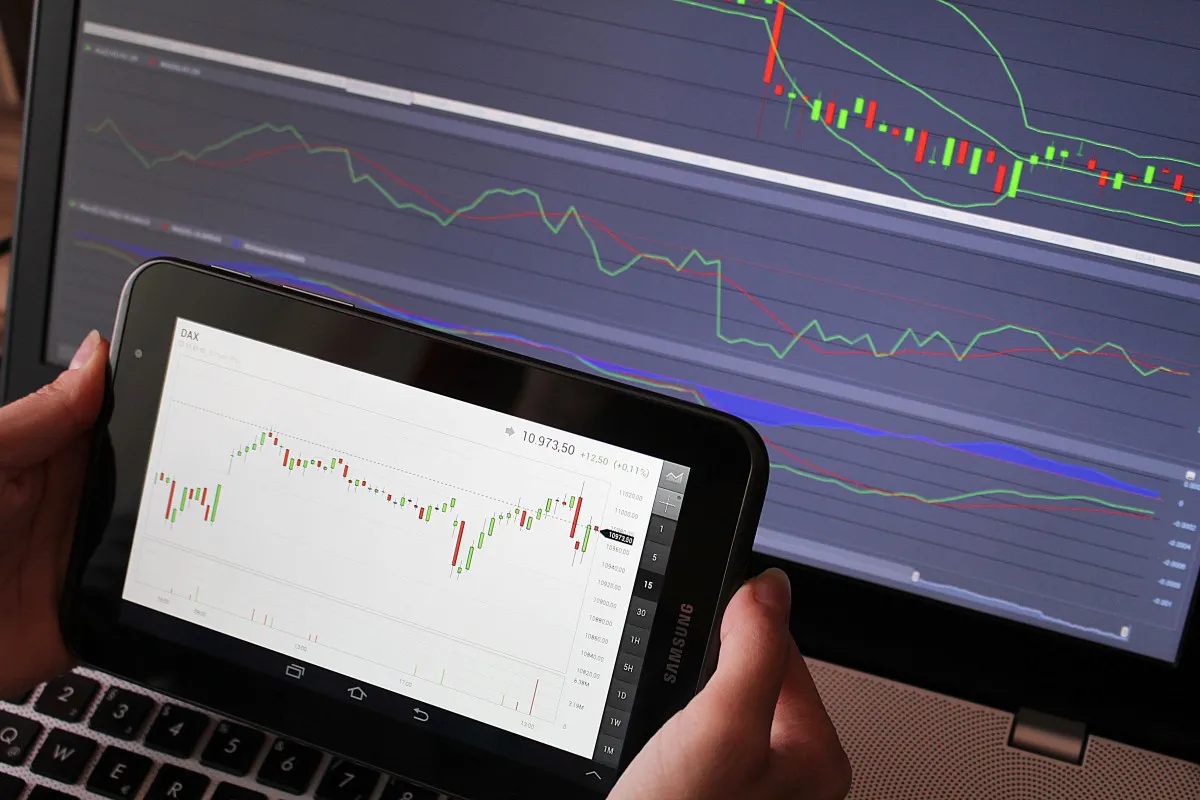
Trading As A Business
Trading in the financial markets, whether it be the Stock Market; the Commodities Market; the Futures Market; the Forex Market; or even the Options Market; is taking big risks on your hard-earned money.
You have to treat trading as a serious business whether you are trading full-time or part-time if you are ever going to succeed and hold on to your profits in the long run.
Yes, you heard me right. You have to plan and manage it like a brick and mortar business.
There is no other way to succeed in trading or speculations if you are not going to give the due respect that Mr. Market deserves. If you don't respect the Market, the market will not give you the reciprocal respect, in terms of taking money out of the markets and hold on to them.
Once you have this proper mindset, we can move on to other important components that make up your trading business.
Trading Plan
The first thing you need to do before you start a business is to have a Business Plan. In this case, it is called a Trading Plan.
Now, this is the place to set your Goals that you want to achieve. Be as specific as possible while being not to easily or impossible to achieve. Set yourself a goal that is challenging to you without it being too big a goal.
Now, with your goal set, you have to break down this goal into smaller components of actions that will lead to achieving your goal eventually.
This is your action plan. Be detail and realistic. If you are working full-time and you can't always look at the market every minute, don't put an action that requires you to monitor your trading positions every moment. You get the idea.
Ok, you have set your plans, what next?
Trading System
In order to survive and prosper in the long run trading in the markets, you need to be consistent in your actions in the buying or selling of your market products, stocks as an example.
You will also need a measure of what actions are right and which are mistakes. Believe me, without such a standardized and formalized measure, you will always think all your actions are right, even when you are losing money! That's the default optimistic human nature in control.
What you need can actually be found in a System. It is normally called a Trading System. A Trading System consists of Setup, Entry, Exit and Money Management strategies.
A Setup is a definitive set of patterns, ratios or conditions that you are looking out for when trading.
An Entry is the actual point where you are to "enter" into the markets, be it a "Buy" or a "Short Sell".
An Exit is as the label implies, the actually point or conditions when you should square-off/close your open trading positions. It could either be a profit-taking exit or a loss cutting exit.
Money Management or more specifically called the Position Sizing strategies defines and answers the question of "how much" to buy or sell in entries or exits. Contrary to common beliefs, this is actually the most important component of a Trading System. It can determine whether you can make it your trading career.
The importance of a Trading System cannot be emphasized more. You need a Trading System to perform consistently according to the changing markets as well as a guidance to tell you when your actions are right and when you are in great risk and danger.
There are two ways that you can have a Trading System. You can either design it yourself if you have the vast amount of knowledge in the trading field required in designing your very own trading system which takes enormous effort and a long and tedious total commitment of your time, or you can order one such Professional Trading System that has been proven to have a win-rate of 71.9%, as tested by an internationally renowned third-party vendor as well as my own experience using it.
Let's take a look at what is required in designing such a Trading System mentioned above.
System Development
Firstly, you will need to determine how much time you are willing to spend researching the market as well as staring in front of your market price quotes. This will determine what type of trading styles you are comfortable in.
Decide whether you are going to do Day Trading, which requires your involvement in the market every minute; Swing Trading, where your open trades last from a day to a few days; Position Trading, where your open trades last anything from a few days to a couple of weeks; Long-Term Investing/Speculating which has the most minimal time requirement where your trades can last from months to years. This is also the most difficult if you are going to watch the markets frequently and you are going to require huge amount of work and market data in order to test out your concepts.
Personally, I prefer Position Trading as it fits my time and activity requirements. It keeps me busy enough yet at a relaxed pace while having ample data for constant refinements and testing of my concepts.
I spoke of refinements of the Trading System. Yes, that is required especially for new initial Trading Systems. You need to go through a series of cycles of refinement and optimization of your newly developed Trading System whilst it is being tested in the markets in real life conditions, with your precious money at stake.
I am getting ahead of myself here. Before we even think about refinements, there are many more things involved in designing and developing a Trading System. Let us go back to the discussion on System development.
Once you have decided which Trading Style you are comfortable with, you will need to determine how you are going to carry such a style. There are basically 3 categories of Trading Methods. They are Technical Analysis, Fundamental Analysis and Intuitive or Mental Analysis. These methods can be used in purity or can also be used in combinations.
Technical Analysis deals with Technical Charts and Graphs. There are numerous technical indicators out there for you to design your System. In fact, there are so many different formulas and variety that you may be overloaded initially. Nevertheless, if you spend enough time reading technical books and about these indicators, you will be able to discern them into various categories like Oscillators, Moving Averages, Trends, Patterns, and Divergences. Pick a number of these indicators to design your Trading System.
Fundamental Analysis deals with the financial ratios of a company as well as the fundamental conditions of a company or market. You make use of such information in order to design a consistent and reliable Trading System. You put reality of the market situation aspect into you Trading System.
Intuitive or Mental Analysis is the discretionary perspective of looking at the markets. You make your own judgment from your subconscious observations or your past experience and do not involve mechanical formulas or fixed visual patterns in your analysis. Though not all such intuitive insights can be formalized into your Trading System, there is no doubt it can be useful in designing your System.
Once you have designed your Trading Strategies, choose a financial market that you are more interested in. It can be the Stock Market, the Index Futures Market, the Commodities Market, the Forex Market or the Options Market.
For now, just pick one. You will have to go through the following steps before you can really confidently trade in your chosen market using your Trading System. Be sure to make refinements along the way. They are,
1) Paper Trading. Simulate your Trading System like you are trading it with real money. Test it out using trading software or manually keeping track of it using historical data. Refine your various System components until you are satisfied with the result, profit in this case.
2) Trade in small lots/amount. Once you have passed the Paper Trading step, you are more confident of your Trading System and you can start to actually trade very small amount of stocks or contracts in the market of your choice. Don't worry about losing for now. Instead concentrate on executing your System properly and with discipline. Further refine your Trading System here again as you will start to see the flaws in your System. Make sure you test your System again after refinements. Once you are very confident that your Trading System will make you money consistently, proceed to the next Step.
3) Initial Actual Trading System trading in normal quantity indicated by your Money Management Strategies. Make sure you follow with strict discipline in the execution of your trades according to your Trading System. Be aware of the psychological challenges involved that are against your rules defined in your Trading System. This is another opportunity to refine your Trading System yet again. Until you are confident of your Trading System again, you should not rush to start your actual trading career.
4) Actual normal trading.
Take control of your trading Psychology and adhere to strict discipline in trading your developed and refined Trading System.
So, as you can see, very much is involved in the designing and development of a Trading System. I have personally spent 9 months just to design and develop the Natural Behavioural Cycle Trading System. I have also made numerous refinements on it over many years of actual experience trading it.
I would suggest taking the easy way out and trying out this Proven 71.9% win-rate Complete Trading System, where everything has been researched, designed, developed and tested for you here,
http://www.howtotradeforaliving.com/order.php
About the author: J.W. Lee, Author: J.W. Lee Source: http://ideacopy.com/ |






